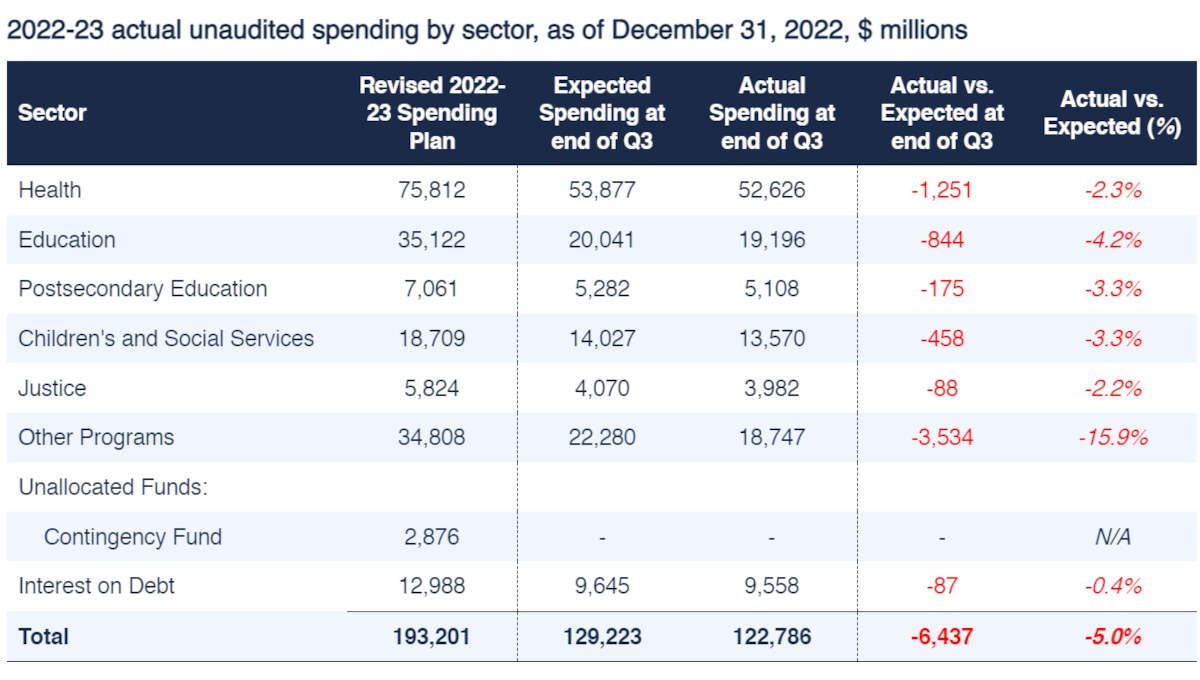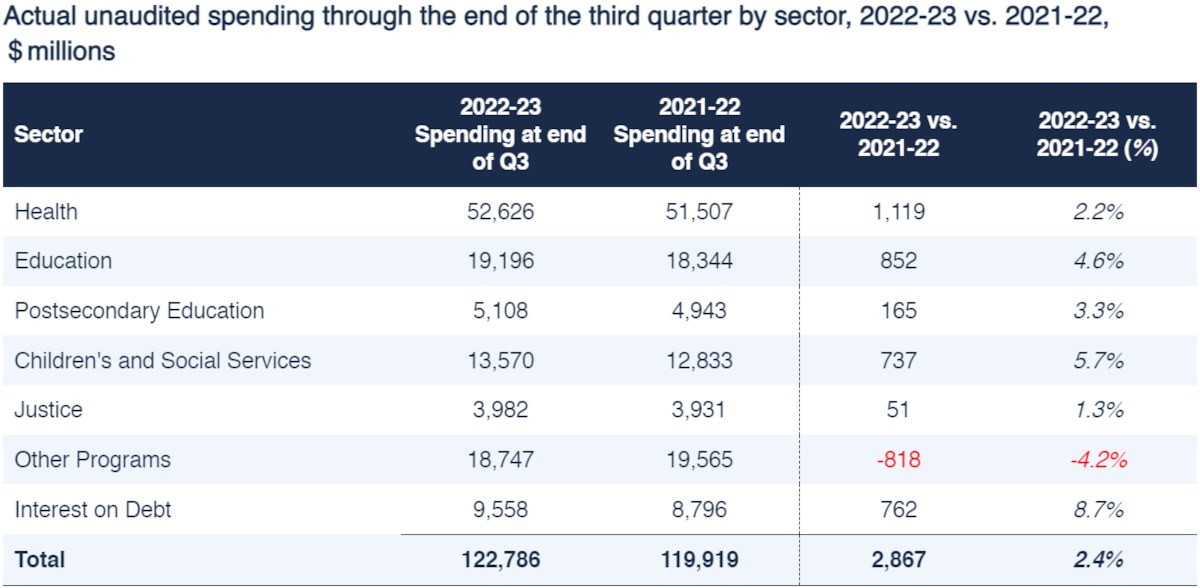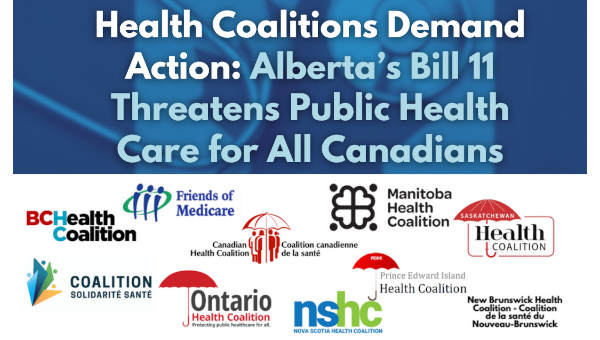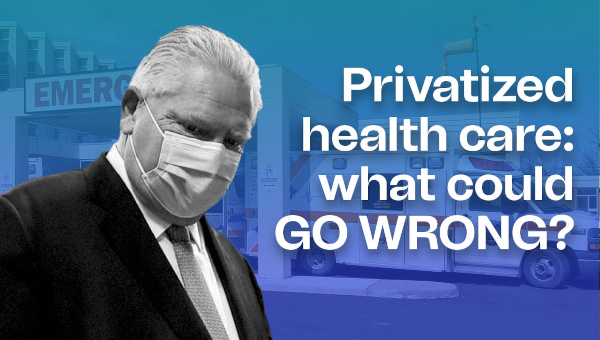There’s Money Galore for Private Clinics – While They Starve Public Healthcare
Actual provincial program spending is much less than “planned.” Provincial spending was $6.4-billion less than planned over the first nine months of the fiscal year 2022/23 according to the Financial Accountability Office (FAO). That is 5.0% less than budgeted. After the first half of the year, the FAO had reported that the government had underspent its budget by 4.1% ($3.5-billion).
Health was underspent by $1.25-billion – or 2.3% less than planned. This is an increase from an underspend of $859-million reported by the FAO after the first half of the year.
The news of the $1.25-billion underspend on health comes just as the province scooped up another $776-million from the federal government for healthcare to deal with urgent health needs like the hospital crisis. But, instead of dealing with urgent hospital needs, it looks like the province will bank the cheque and underspend the health budget it set last March.
Despite the health underspend, the for-profit clinic line item is massively overspent. For the first three-quarters of the year, the government spent 104.3% of the budget for these clinics. This is even before they announced in February 2023 that they were immediately increasing their funding of for-profit clinics for cataract surgeries, MRIs, CTs, and orthopedic surgeries. So even as they ration healthcare, they are all-in on for-profit care.

Spending Increases Falling Far Behind Cost Pressures
FAO data reveals that the rollout of new LTC beds and facilities is going slow. Spending on long-term care development and capital through the first nine months of the fiscal year were 0% and 36% of their total annual respective budgets.
Overall spending increased by $2.9-billion more than in the first nine months of the previous fiscal year. That is a 2.4% increase. This is a decrease from the $3.6-billion (4.7%) increase reported by the FAO for the first half of the year. So, the increase is shrinking as the year progresses. Worse, as the CCPA notes, program spending increased only 1.9%. The quite separate line item, interest on debt, went up at a much quicker rate than program spending – 8.7% – presumably due to rising interest rates.

The health sector spend was $1.119-billion (2.2 per cent) more in the first three quarters of 2022-23 compared to the same period in 2021-22. Most of this was for payments to physicians ($518-million) and for Drug Programs ($422-million). Operations of LTC ($342-million), Operations of Hospitals ($353-million), and homecare ($271-million) also got a bump. These increases were offset by lower capital spending on Long-Term Care Homes (-$406-million) and lower Population and Public Health spending (-$729-million).
The health increase is far less than cost pressures for aging, population growth, the surgical backlog, the LTC bed and hours of care catch-up, and – especially – for the very high inflation in Ontario in 2022. This almost certainly means healthcare quality and capacity is declining.
The 2.2% increase in health spending is less than the 2.4% increase in overall spending. That sounds counter to what one might expect given the unprecedented healthcare capacity crisis. The 2.2% increase in health sector spending compared to the same period in 2021/2 was down from a 3.0% in the first half of the year. So health funding is slipping back down.
The 1.5% “increase” in hospital spending reported is even less than the overall healthcare increase of 2.2% – despite the hospital capacity crisis. But even this increase is mostly just an accounting change, and not a real increase. In the second quarter the government moved $382-million in Ministry of Health spending for clinical education to other Ministry of Health line items – and the operation of hospitals line item gained $230-million.
FAO data indicates the government has only spent 36.7% of their health sector COVID line item. This aligns with the official government plan to eliminate special COVID spending next year. That is going to sting.
Bottom line: The government is well on its way to underspend its budget by billions of dollars, including for health. Despite this, spending on for-profit clinics is massively over-budget. Healthcare spending is increasing over last year much less than cost pressures, especially considering the rapid increase in inflation. The underspend, combined with the recently recognized massive increase in government revenue (+$16.6-billion), means the deficit should be shrinking very quickly. The government’s program spend as a percentage of the economy will be shrinking rapidly, along with the real value of its spend.
Inflation has worked wonders for this PC government: it has dramatically increased government revenue and it is dramatically reducing the value of public services to the public – without requiring the government to announce program or spending cuts. •
This article first published on the Defend Public Healthcare website.





